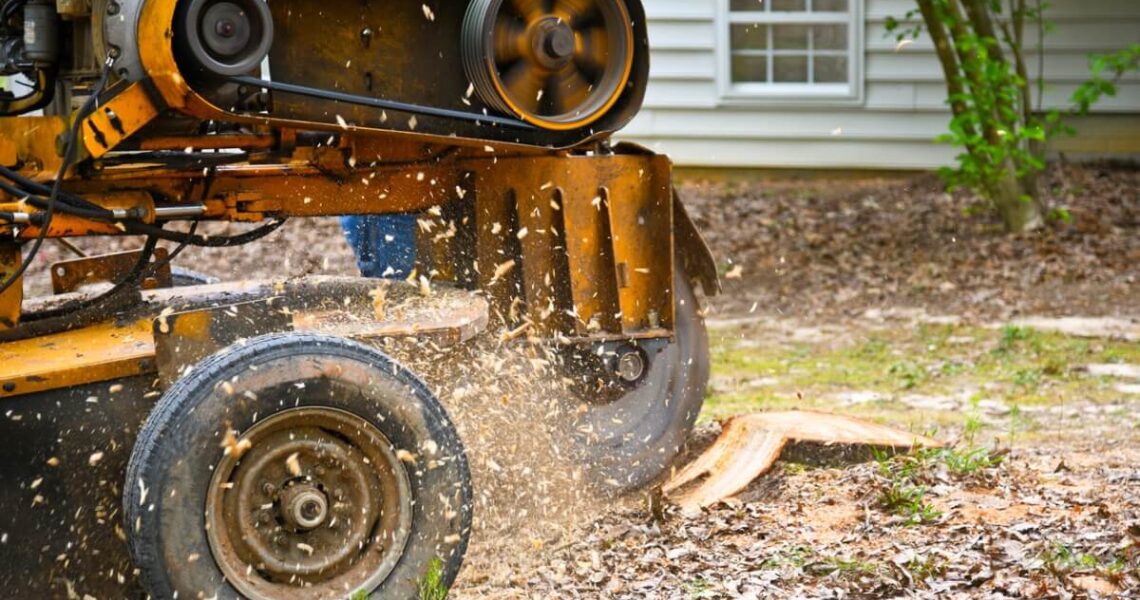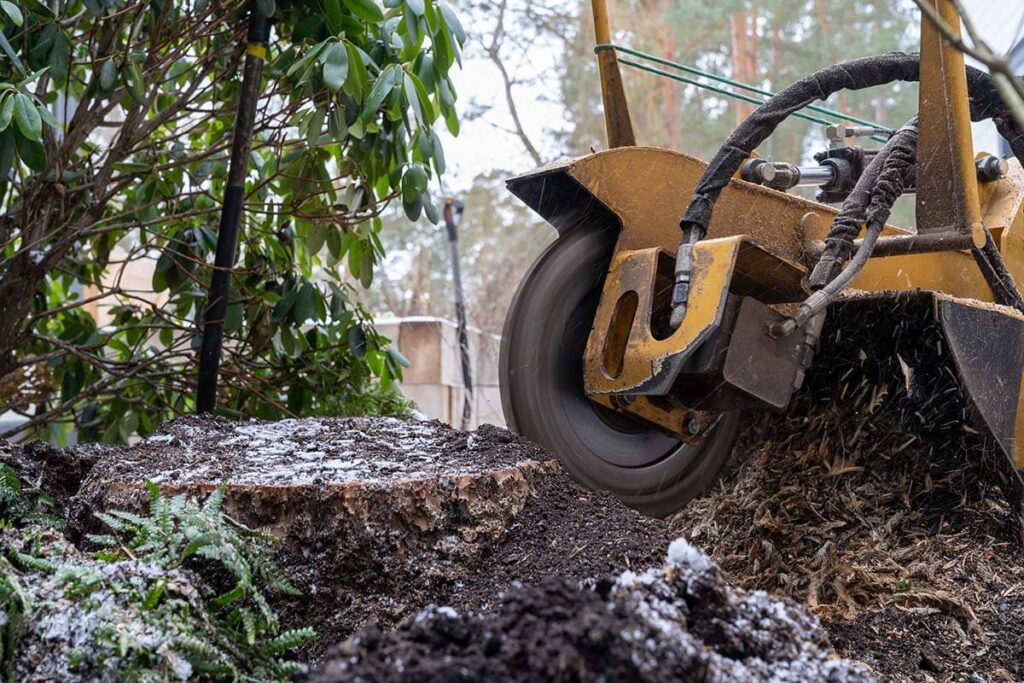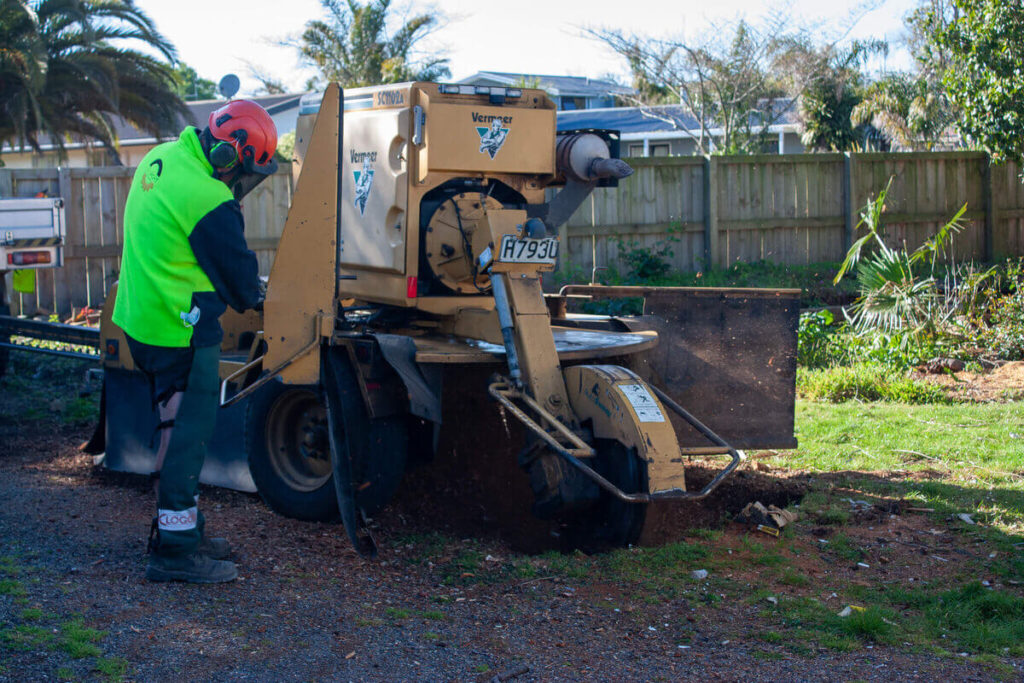Efficient Tree Grinding: What You Need to Know
July 26, 2024
Tree grinding is an essential process in many landscaping and forestry projects. Whether you are working on a construction site, clearing land for development, or simply maintaining your backyard, understanding the basics of tree grinding can save you time, effort, and money. In this article, we will explore the importance of tree grinding, the key components of a tree grinder, safety measures to consider, steps to efficient tree grinding, maintenance tips for the equipment, and the environmental impact of this process. By the end of this article, you will have a comprehensive understanding of efficient tree grinding and its various aspects.
Understanding the Basics of Tree Grinding
Before delving into the specifics, let’s first understand why tree grinding is vital. Tree grinding involves using a powerful machine called a tree grinder to chip away and pulverize tree stumps, branches, and debris into small wood chips. This process not only helps in clearing the area but also provides numerous benefits for the environment. By converting wood waste into useful mulch or compost, tree stump grinding Sydney promotes sustainable land management practices and reduces the need for disposal in landfills.
Tree grinding is a cost-effective alternative to manual stump removal, which can be labor-intensive and time-consuming. It fast-tracks the land restoration process by eliminating obstacles and creating space for new plantings or construction projects. Now that we have established the importance of this method, let’s explore the key components of a tree grinder.
The Importance of Tree Grinding
Efficient tree grinding plays a crucial role in various scenarios. For land development projects, removing tree stumps and vegetation is essential to prepare the site for construction. Similarly, in landscaping endeavors, the removal of unwanted trees or stumps enhances the overall appearance of the surroundings. Tree grinding also assists in preventing potential hazards such as tripping, pest infestation, and disease spread that decaying stumps can pose.
Moreover, tree grinding contributes to the health of the ecosystem by promoting the growth of new vegetation. The wood chips produced during the grinding process act as a natural mulch, providing insulation to the soil and retaining moisture. This creates a favorable environment for the growth of plants, shrubs, and trees, ensuring the long-term sustainability of the area. Click here to get about hiring a professional stump grinder in Sydney.
Key Components of a Tree Grinder
A tree grinder consists of several key components, each playing a vital role in the efficiency of the process. These include:
Engine:
The engine provides the power required to drive the grinder and its various moving parts. It is essential to ensure the engine is in good working order and regularly maintained to maximize efficiency.
Cutting System:
The cutting or grinding system includes sharp rotating blades or teeth that chip away the wood. These blades need to be periodically sharpened or replaced to maintain optimal performance. Additionally, the design and configuration of the cutting system determine the size and consistency of the wood chips produced.
Collection Bag:
The collection bag or chamber collects the wood chips generated during the grinding process. Regularly emptying the bag ensures uninterrupted operation and prevents clogging. The collected wood chips can then be repurposed as mulch or compost, contributing to sustainable land management practices.
Transportation and Maneuverability:
Tree grinders are often mounted on trailers or designed with wheels for easy transportation and maneuverability around job sites. This mobility allows operators to efficiently navigate through different terrains and access hard-to-reach areas, ensuring thorough tree grinding in all necessary locations.
Understanding the importance of tree grinding and the key components of a tree grinder is essential for anyone involved in land development, landscaping, or environmental conservation. By utilizing this knowledge, professionals can make informed decisions and implement effective tree grinding practices, contributing to the overall health and sustainability of our natural surroundings.

Safety Measures in Tree Grinding
While tree grinding is a valuable process, it is essential to prioritize safety to prevent accidents and injuries. Here are a few safety measures to consider:
Personal Protective Equipment for Tree Grinding
Wearing appropriate personal protective equipment (PPE) is crucial when operating a tree grinder. This includes:
- Protective goggles or safety glasses to shield the eyes from wood chips and debris
- Ear protection, such as earmuffs or earplugs, to minimize noise exposure
- Heavy-duty gloves to protect hands from potential hazards
- Steel-toed boots for foot safety
Properly fitting and regularly inspecting the PPE ensures optimum protection for the operator.
Additionally, it is recommended to wear a hard hat to protect the head from falling branches or debris during tree grinding operations. The hard hat should fit securely and be in good condition to provide adequate protection. In colder climates, layering clothing is also important to stay warm and maintain flexibility while operating the equipment. You can visit https://www.safework.sa.gov.au/workers/personal-protective-equipment to get about clothing or equipment a worker uses or wears to minimize health and safety risks.
Safe Operation of Tree Grinders
Follow these safety guidelines for the safe operation of tree grinders:
- Read and understand the manufacturer’s instructions and guidelines before operating the machine.
- Maintain a safe distance from the grinding area and bystanders.
- Inspect the machine for any damage, loose parts, or leaks before use.
- Secure the machine and establish stable footing to prevent tipping.
- Avoid wearing loose clothing or jewelry that can get caught in the machine.
By adhering to these safety measures, tree grinding can be carried out with minimal risk.
Furthermore, it is important to conduct a thorough risk assessment of the work area before commencing tree grinding activities. Identify any potential hazards such as overhead power lines, uneven terrain, or nearby structures that could affect the operation. Clearing the work area of obstacles and marking boundaries can help ensure a safe working environment for both the operator and others in the vicinity.
Steps to Efficient Tree Grinding
To ensure efficient tree grinding, it is essential to follow a systematic approach. Let’s explore the steps involved:
Preparing the Tree for Grinding
Prior to grinding a tree, it is important to assess the surrounding area for any potential obstacles. Clearing away rocks, debris, and loose branches ensures safe and smooth operation of the grinder. Additionally, trimming the tree’s branches and removing any excess foliage will facilitate easier access to the stump for grinding.
Furthermore, it is crucial to consider the type of tree being removed. Different tree species have varying levels of hardness, which can impact the grinding process. For example, hardwood trees like oak or maple may require a more powerful grinder compared to softer wood varieties such as pine or cedar. Understanding the characteristics of the tree will help in selecting the appropriate equipment and techniques for efficient grinding.
Proper Use of the Tree Grinder
When operating the tree grinder, follow these steps:
- Select the appropriate cutting system for the size and toughness of the material being ground.
- Position the grinder above the stump, ensuring the cutting blades make contact with the wood.
- Gradually lower the cutting system into the stump by adjusting the machine’s controls.
- Move the grinder in a back-and-forth motion to ensure even grinding and efficient removal of the stump.
- Continue grinding the stump until it is reduced to wood chips or mulch.
- Finally, remove any remaining debris and inspect the area for any missed or protruding remnants.
Following these steps ensures thorough and efficient removal of tree stumps or wood debris.
In addition to the operational steps, it is important to emphasize safety precautions when using a tree grinder. Protective gear such as goggles, gloves, and steel-toed boots should be worn to prevent any injuries from flying debris or accidental contact with the machine. Prior to starting the grinder, double-check that all safety features are in place and functioning correctly to minimize risks during the grinding process. Safety should always be a top priority when undertaking tree grinding tasks to ensure a successful and incident-free operation.

Maintenance of Tree Grinding Equipment
Proper maintenance of tree grinding equipment is crucial for maximizing its longevity and performance. Regular maintenance not only prevents costly repairs but also helps avoid unexpected breakdowns. Here are a couple of maintenance tips:
Routine Maintenance for Longevity
Regularly inspect the grinder for any damaged or worn-out parts. Lubricate the moving components according to the manufacturer’s guidelines to minimize friction and ensure smooth operation. Additionally, keep the cutting blades sharp by sharpening or replacing them as needed. Remember to clean the collection bag or chamber and remove any buildup of wood chips or debris to prevent clogging.
Troubleshooting Common Grinder Issues
If you encounter any issues with the tree grinder, here are a few troubleshooting tips:
- If the grinder fails to start, check the engine’s fuel level, spark plug, and filters.
- If the machine is vibrating excessively, inspect the cutting system for any imbalance or damage.
- If the wood chips produced are too large or uneven, ensure the cutting blades are sharp and properly aligned.
- In case of unusual noises or odors, immediately stop the machine and investigate for any mechanical issues.
Regular maintenance and timely identification of problems can significantly extend the life and efficiency of your tree grinder.
Environmental Impact of Tree Grinding
One of the notable advantages of tree grinding is its positive environmental impact. Let’s explore the benefits:
Benefits of Tree Grinding to the Environment
Tree grinding offers various environmental benefits, including:
Reduced landfill waste:
By converting tree stumps and wood debris into mulch or compost, tree grinding minimizes the volume of waste that ends up in landfills. This contributes to sustainable waste management practices.
Improved soil health:
The wood chips produced during the grinding process act as natural mulch. As they decompose, they enrich the soil with organic matter, enhance moisture retention, and promote healthier root systems in nearby plants.
Prevention of forest fires:
Removing dead trees, branches, and stumps reduces the risk of wildfires, especially in fire-prone areas. The grinding process converts these potential fuel sources into harmless wood chips.
Responsible Disposal of Tree Grindings
After completing the tree grinding process, it is important to dispose of the wood chips appropriately. Consider the following disposal options:
- Reuse on-site: If the wood chips are of high quality, they can be used on-site as mulch or compost for landscaping or gardening purposes.
- Recycling: Local recycling centers or composting facilities may accept tree grindings. Check with your local waste management authorities for guidance.
- Donation: Some community gardens, parks, or organizations might be interested in using wood chips for various projects. Inquire if they accept tree grindings as donations.
Conclusion
In conclusion, understanding the fundamentals of efficient tree grinding is essential for various landscaping and land development projects. By comprehending the importance of tree grinding, the key components of a tree grinder, safety measures, steps to efficient grinding, equipment maintenance, and the environmental impact of this process, you are equipped with the knowledge necessary to tackle tree grinding tasks effectively. Remember to prioritize safety, follow the manufacturer’s guidelines, and dispose of the wood chips responsibly. With this knowledge, you are well on your way to efficiently grinding trees and managing your land in a sustainable manner



